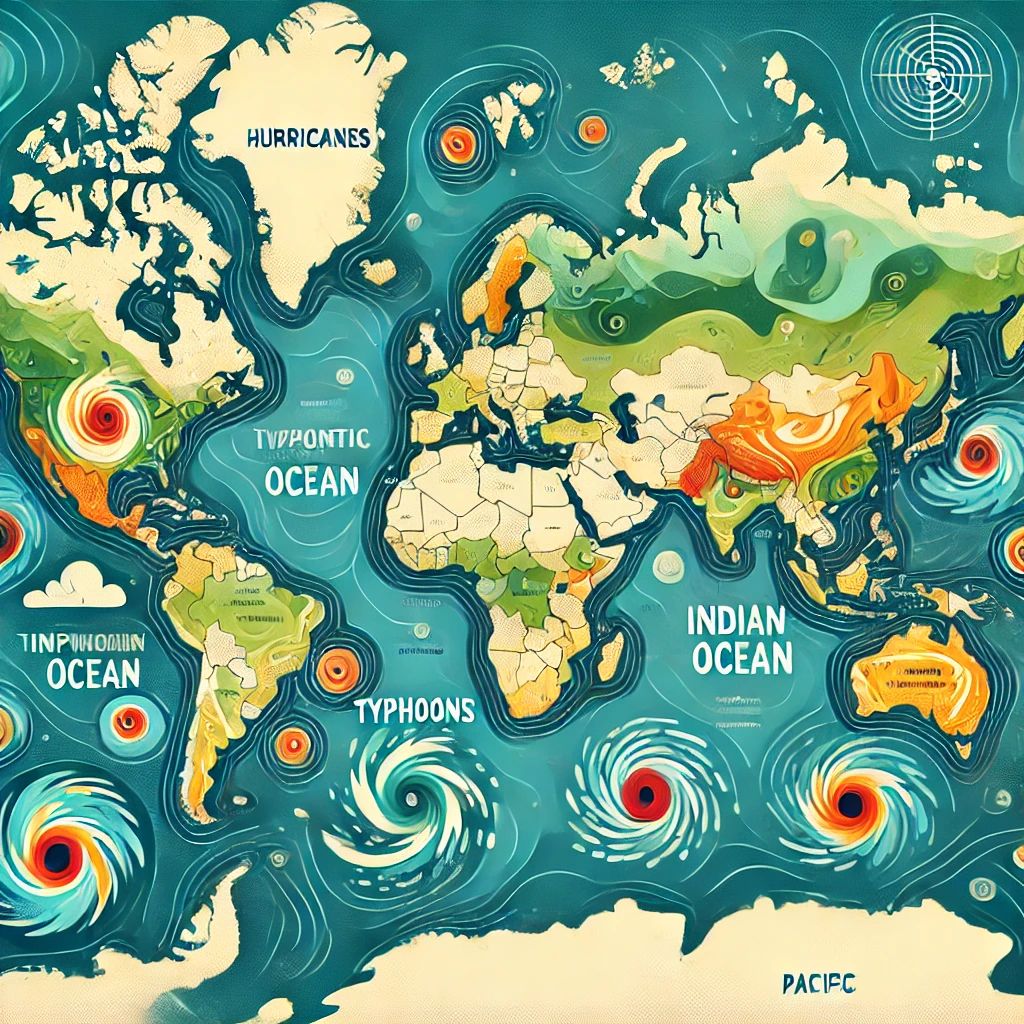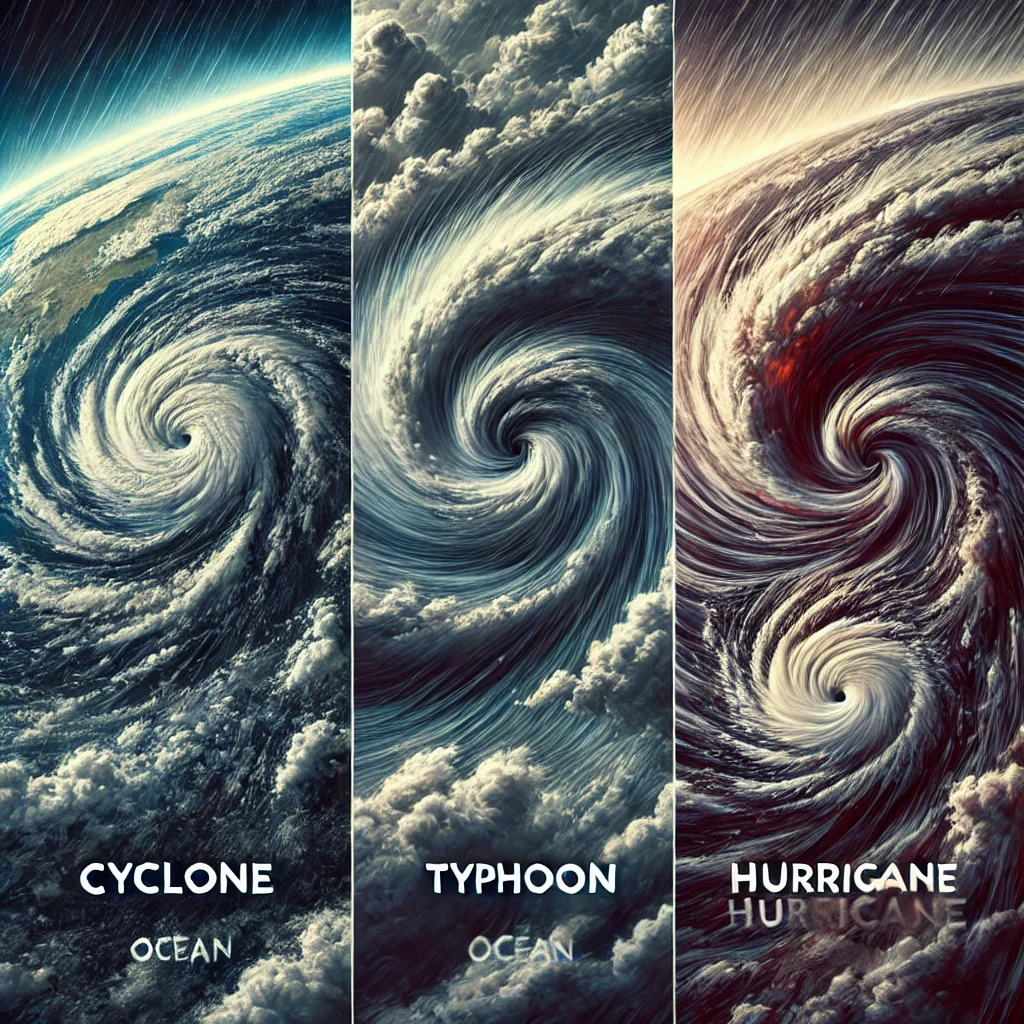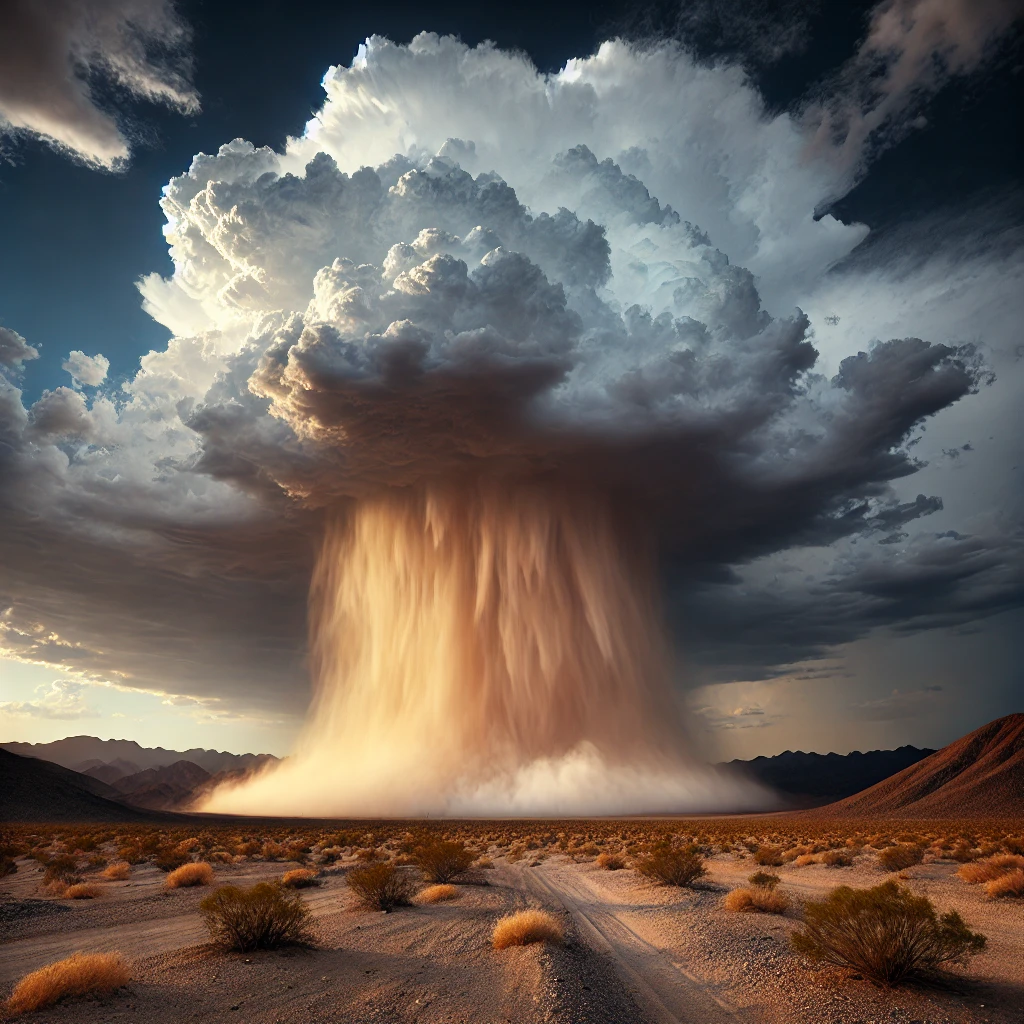What Are Cyclones, Typhoons, and Hurricanes: Key Differences and Similarities
Introduction
Cyclones, typhoons, and hurricanes are all powerful tropical storms that cause significant damage and devastation. Despite their similarities, they are differentiated by geography, terminology, and specific environmental conditions. Understanding the distinctions and commonalities between these weather phenomena helps improve preparation and response during extreme weather events. This article delves into the definitions, formation processes, and distinguishing features of cyclones, typhoons, and hurricanes.
Definition and Terminology
- Cyclone is a generic term used to describe any system of winds spiraling around a low-pressure center. Cyclones can occur in various regions and are classified into different categories based on their location and strength.
- Hurricanes are cyclones that occur in the Atlantic Ocean and the northeastern Pacific Ocean. They are the same weather phenomena as typhoons but differ by region.
- Typhoons are cyclones that occur in the northwestern Pacific Ocean, particularly around East Asia.
Though these terms refer to the same type of storm, they vary based on geographical naming conventions. The term “cyclone” itself is often used more broadly, while “hurricane” and “typhoon” are region-specific names.
Formation of Cyclones, Typhoons, and Hurricanes
The fundamental process of formation for cyclones, typhoons, and hurricanes is the same. These storms form over warm ocean waters near the equator and are driven by moisture, heat, and the Coriolis effect.
- Warm Water and Moist Air: Tropical storms form over ocean waters that are at least 26.5°C (about 80°F). The heat from the warm water causes the air above it to rise, creating an area of low pressure at the surface.
- The Coriolis Effect: The rotation of the Earth causes the winds to spiral, and this is what leads to the characteristic swirling motion of cyclones. In the Northern Hemisphere, these storms rotate counterclockwise, while in the Southern Hemisphere, they rotate clockwise.
- Development of a Storm System: As warm air rises, it cools and condenses, forming storm clouds. This process releases latent heat, further fueling the system. As the storm intensifies, wind speeds increase, and the system can develop into a tropical depression, a tropical storm, and eventually a fully-fledged cyclone (hurricane or typhoon) once wind speeds reach 119 km/h (74 mph).
Differences Based on Location
The primary distinction between cyclones, hurricanes, and typhoons is the region in which they occur:
- Cyclones:
- Occur in the South Pacific and Indian Oceans.
- Common regions: India, Bangladesh, and Australia.
- Known as “tropical cyclones” in this region.
- Hurricanes:
- Occur in the Atlantic Ocean and the northeastern Pacific Ocean.
- Primarily affect the Americas and the Caribbean.
- Season: June to November (peaks in September).
- Typhoons:
- Occur in the northwestern Pacific Ocean.
- Impact countries in East Asia, such as Japan, the Philippines, China, and Taiwan.
- Season: Year-round but most frequent between June and December.
Strength and Classification
All three storms are classified using the Saffir-Simpson Hurricane Wind Scale in the Atlantic and eastern Pacific regions or similar scales in other parts of the world. The categories are:
- Category 1: 74-95 mph (119-153 km/h)
- Category 2: 96-110 mph (154-177 km/h)
- Category 3: 111-129 mph (178-208 km/h)
- Category 4: 130-156 mph (209-251 km/h)
- Category 5: 157 mph or higher (252 km/h or higher)
Hurricanes and typhoons of Category 3 and higher are often referred to as “major hurricanes” or “super typhoons.” These are capable of causing extensive destruction, including severe flooding, property damage, and loss of life.

You May Also Like: The Science Behind Thunderstorms: What Causes Lightning and Thunder?
Similarities
Despite their different names, cyclones, hurricanes, and typhoons share many characteristics:
- Structure: All three feature a well-organized spiral of clouds, rain, and thunderstorms. At their core, they have a central calm region called the eye, surrounded by the eyewall, which contains the storm’s strongest winds.
- Power and Destruction: The damage caused by these storms is often catastrophic, including heavy rains, storm surges, and intense winds that can destroy homes, infrastructure, and agricultural areas. Storm surges can cause severe coastal flooding, and heavy rain can lead to landslides and inland flooding.
- Lifespan: Most tropical cyclones last for several days, but in favorable conditions, they can persist for over a week. They typically weaken when they move over land, losing their source of warm water and moisture.
- Preparations and Warnings: Regardless of whether the storm is called a cyclone, typhoon, or hurricane, early warnings and preparedness are essential. Governments issue alerts to populations in affected areas, and evacuations are often necessary to mitigate the storm’s impacts.
Differences Beyond Geography
While the terms differ regionally, some other factors also set these storms apart:
- Seasonal Timing: The timing of cyclone, hurricane, and typhoon seasons varies based on location:
- Hurricane season in the Atlantic runs from June to November, peaking in September.
- Typhoon season can be year-round in the western Pacific, with more frequent storms from June to December.
- Cyclones in the South Pacific and Indian Ocean tend to peak between November and April.
- Intensity: Typhoons are sometimes stronger than hurricanes, partly due to the warmer waters in the western Pacific, which can fuel the storms to greater intensity. The term super typhoon is often used for storms that reach the equivalent of a Category 4 or 5 hurricane.
- Direction of Movement:
- Hurricanes and typhoons tend to move westward, affecting the Americas in the case of hurricanes and Asia in the case of typhoons.
- Cyclones in the Indian Ocean can move in various directions, including toward South Asia, Australia, and parts of Africa.
Climate Change and the Future of Tropical Storms
The intensity and frequency of tropical storms, including cyclones, typhoons, and hurricanes, are likely to be impacted by climate change. Rising sea surface temperatures provide more energy for storms, which can lead to stronger and more destructive events. Although there is no clear consensus on whether climate change is increasing the number of storms, studies indicate that the storms that do form are becoming more intense and capable of carrying greater amounts of moisture, which leads to heavier rainfall and flooding.
Additionally, rising sea levels exacerbate storm surges, making coastal areas more vulnerable. As populations in vulnerable regions grow, the potential human and economic costs of these storms increase.
Conclusion
In essence, cyclones, typhoons, and hurricanes are fundamentally the same meteorological phenomenon, differentiated primarily by the regions in which they occur. They all form under similar conditions, possess comparable structures, and cause devastating impacts. Recognizing their differences in geography and intensity can aid in better understanding how these storms operate and how best to prepare for them.
As climate change continues to shape global weather patterns, there is a growing need for improved forecasting, preparedness, and resilience in communities at risk of these destructive storms. Awareness and readiness remain the key to mitigating the devastation caused by these natural disasters, regardless of what they are called.
Also Visit: Cybersecurity Risks: Protect Yourself from Online Threats




1 comment